German "flying tank" - attack aircraft Henschel Hs 129
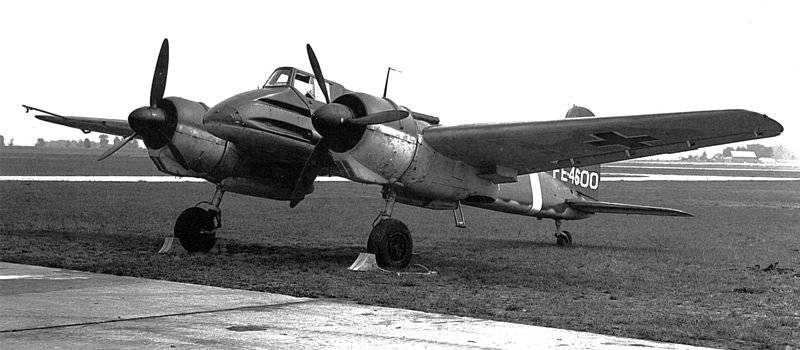
In 1937, the Luftwaffe command invited the Focke-Wulf, Blom and Foss and Henschel companies to take part in the competition for the creation of a new aircraft directly supporting the ground forces. The new attack aircraft was supposed to replace its predecessor, the half-glider Hs 123. According to the prepared technical task, which was based on the experience of fighting in Spain, it was planned to develop a maneuverable, small, well-armored aircraft with powerful weapons, which, to ensure greater survivability, had to be equipped with 2 engines. Of the prototypes submitted for the construction, the choice was made on the projects of the Henschel and Focke-Wulf companies. Tests that were conducted in 1939 year, revealed the advantages of the aircraft development company "Henschel." As a result, the Hs 129 attack aircraft created by chief designer F. Nikolaus in 1940 was launched into serial production under the symbol Hs 129A.
However, already with the arrival of the first serial attack aircraft in the combat units, the pilots quickly revealed its shortcomings, in particular, weak booking, insufficient power. aviation engines, a very poor view from the cockpit, which made it impossible to use a group flight due to the danger of collisions of cars in the air. The company "Henschel" was forced to urgently make the necessary changes to the design of its aircraft, and already in September 1941, production of a new modification of the Hs 129B attack aircraft began, which became the most massive model and the basis of the Luftwaffe's attack aircraft.
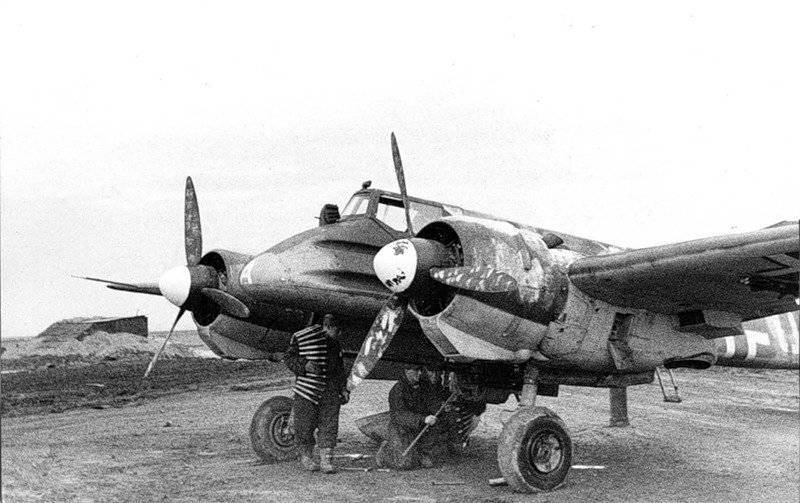
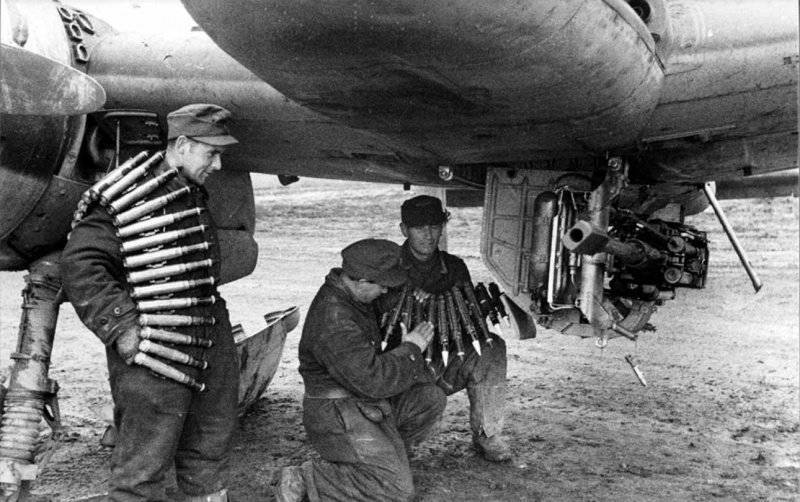
The Hs 129B attack aircraft was a single-engined single-seat free-carrying monoplane with a low wing. The fuselage of the aircraft is a semi-monocoque all-metal construction, it has a trapezoidal section with a smooth working skin. Attack ground fuselage consisted of 3-x main parts that were docked with each other: bow, center and tail.
Of greatest interest was the nose of the fuselage, which was located in the cockpit. The cockpit is a solid armored box, which was welded from steel sheets with a thickness of 6 mm. All sheets used were flat, with the exception of the top sheet, which was streamlined. On the side surfaces of the armored cart there was an 2 gutter designed to hold barrels of aircraft cannons.
In order to give the nose of the fuselage of the car a streamlined shape, it was covered from the sides and bottom with duralumin fairings (removable). Compared with another famous WWII attack aircraft - the IL-2, which had a streamlined shape of the armored capsule design itself, the Hs 129 radomes could be viewed as an extra ballast, which was quite burdensome for the aircraft.
The nose part was fastened to the central part with the help of bolts, the center section of the wing was also docked to the central part of the fuselage. The fuselage was connected to the center section using 2's power ribs, which went into the side panels of the fuselage. In the central part of the fuselage there were small arms and cannon armament and a fuel tank with a capacity of 200 liters. The tail part of the attack aircraft fuselage, which carried the vertical and horizontal tail, was made detachable. Its attachment to the central part was carried out along the whole contour with the help of bolts.
The design used on the plane of the armored capsule reflected the long-term experience of the Henschel company in the manufacture of various armored vehicles for the needs of the ground forces, this was the main production for the company. The chief designer of the aircraft Nikolaus and his team wanted to provide the pilot with a good view from the cockpit down and forward using small observation devices of the type tank... At the same time, when using them, a rather strict restriction was imposed - the distance between the glazing and the pilot's eyes should not have been more than 30 cm.
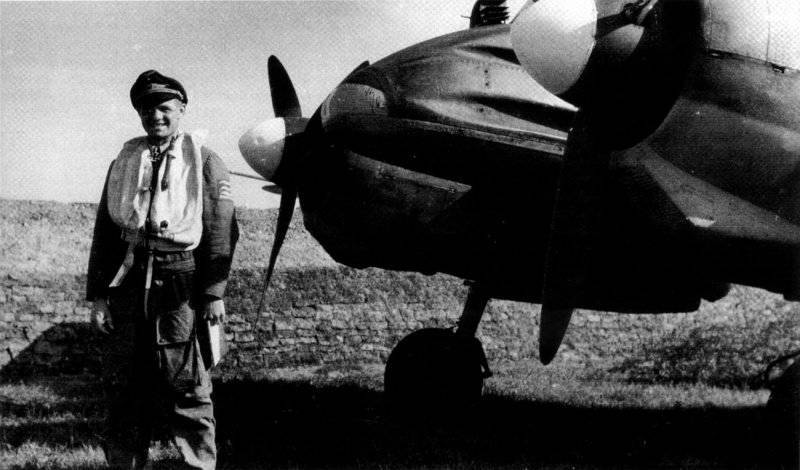
Requirements for placing the pilot's head close to the front glazing of the cockpit canal made it necessary to “stretch” the pilot's legs into the nose, and the desire to ease the weight of the armored capsule to the low position of the pilot's seat. The width of the upper part of the capsule was determined only by the width of the pilot's shoulders - “climbed by any way”. The dashboard was exceptionally small and there was no place on it to install engine control instruments that were placed on the inside of the engine nacelle. At the same time, the small dimensions of the movable segment of the cockpit canal made it very difficult to view the sides, because of which the pilots had problems during flight and taxiing on the runway. On the review of the rear hemisphere of the speech was not conducted at all.
The poor view from the pilot’s seat remained the price of his relatively good security. The transparent part of the cockpit lantern was made of bulletproof glass with a thickness of 75 mm. Behind the pilot, an armored partition wall was installed with a thickness of 6 mm. At the same time, the low position of the pilot's seat in the cockpit caused the use of a very short control knob, which the pilots did not like.
The power plant of the attack aircraft consisted of 2-x engines, located on special frames under the wing of the aircraft. Originally, two 12-cylinder Ag-410A liquid-cooling engines manufactured by Argus were installed on the attack aircraft. However, their power in 465 HP it was clearly not enough. For this reason, when the Wehrmacht captured enough French GR-14 engines from the French company Gnome-Rhone that had more power, they were immediately used to equip the Hs-129 attack aircraft in modification B. The GR-14 engines were star-shaped two-row 14-cylinder and developed power in 700 hp The engines were equipped with “Ratier” three-bladed screws, which had metal blades with a diameter of 2,6 meters. The lower "semi-cylinders" of engine hoods were made from pressed steel sheets with a thickness of 5 mm. Armor of the same thickness covered the oil radiators, which were mounted under the root parts of the consoles.
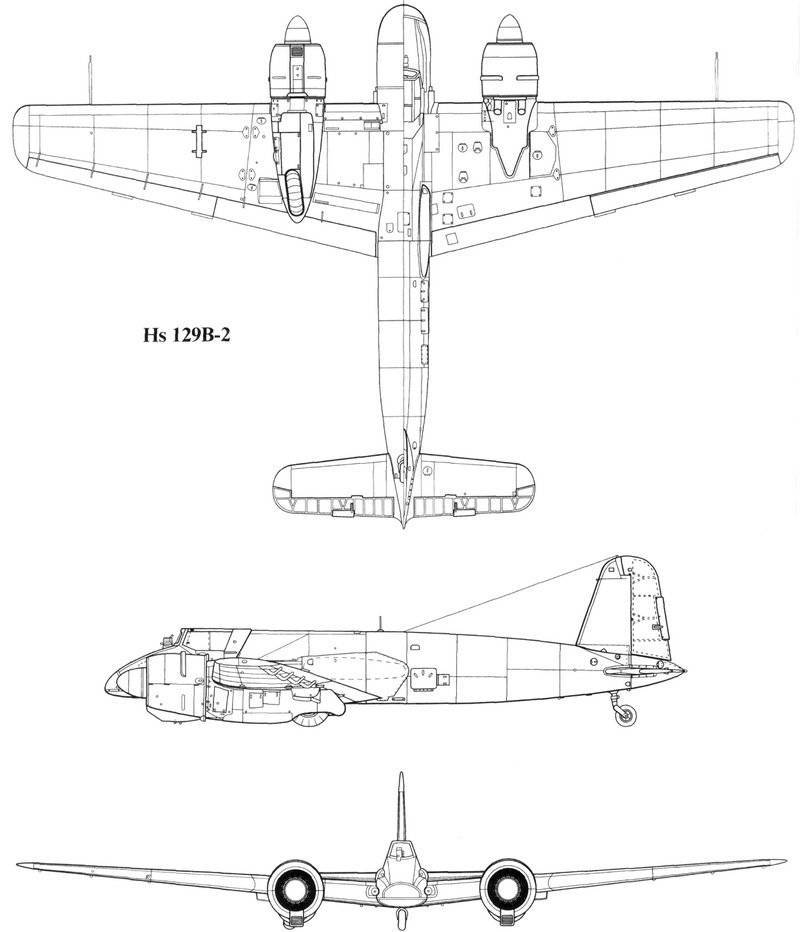
The fuel supply of the aircraft was equal to 610 liters and was located in 3-x protected tanks, one of which in 200 liters was located in the central part of the aircraft fuselage, and 2 tank of 205 liters capacity in the left and right sides of the fuselage. The central gas tank was equipped with a centrifugal motor pump, which served to pump fuel.
The standard armament of the Hs-129B attack aircraft included the 2x7,92-mm MG-17 machine gun and the 2-X15-20 mm MG-151 gun. Machine guns were located in the central part of the wing near the sides of the fuselage, and the guns were located on the sides of the fuselage in special sockets above the wing and were covered with a fairing. The ammunition of each gun - 250 shells, machine guns - 1000 cartridges. In addition, the aircraft could carry various outboard weapons, including 30-mm, 37-mm and even 75-mm guns. Shooting and reloading guns were all electric. Gunfire control was electric, electro-pneumatic reloading. Control weapons It was focused on the control stick of the attack aircraft; the switch on the handle allowed firing from all weapons simultaneously or separately from machine guns or cannons.
About how pilots Hs-129 "liked" attack aircraft can be judged by the following statement of one of the pilots. “The flight characteristics of the attack aircraft were so bad that I provided myself with nightmares at night for many years to come! Steering required a lot of physical effort from the pilot, for this reason, even adjusting the sight slightly during the attack did not always work. The control stick of the aircraft was short and almost did not take into account the anatomical structure of the pilot. Was difficult and landing. In addition to heavy control, the attack aircraft was unstable with respect to all 3 axes during flight in a turbulent atmosphere. In fact, Hs-129 has only 1 plus - this is a high probability that the pilot will survive as a result of a hard landing on the belly - the design of the armored capsule is strong enough. ”
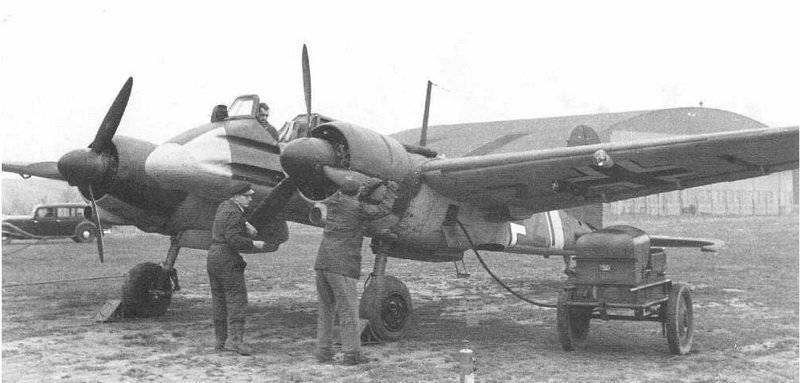
The production of the Hs-129 attack aircraft was halted in September 1944. Until that time, the Luftwaffe had time to get around 870 aircraft. In the conditions of air superiority of German aircraft, this well-armed and armored attack aircraft could have a significant impact on the course of hostilities. But its production was carried out very slowly, so that a sufficient batch of 411 stormtroopers was made only in 1943, when Soviet aircraft had completely recovered from the losses inflicted on it.
The main drawbacks of the Hs-129В attack aircraft were low speed and lack of protection against fighter attacks from the rear hemisphere, due to which the aircraft became easy prey for Soviet fighter pilots. Despite this, the aircraft was used by the Germans before the start of the 1945 of the year, a number of attack aircraft were also in service with the Romanian Air Force and managed to make war against both the Soviet and German forces.
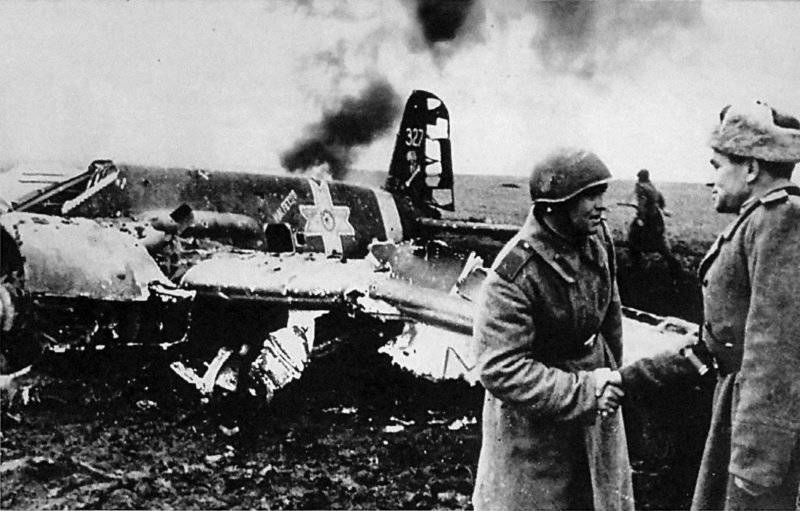
Flight Specifications Hs.129b-2
Dimensions: wingspan - 14,2 m., Length - 9,75 m., Height - 3,25 m.
Wing area - 28,9 square. m
The normal take-off weight of the aircraft is 4310 kg., The maximum take-off is 5250 kg.
Fuel supply - 610 l.
Engine type - 2 PD Gnome-Rhône 14М 4 / 5, hp 700 power each
The maximum speed is 320 km / h.
Cruising speed - 265 km / h.
Practical range - 560 km.
Practical ceiling - 7500 m.
Crew - 1 man.
Armament: standard: 2х20-mm MG-151 / 20 guns, 2-X7,92-mm MG-17 machine gun. Suspended up to 4-x 50-kg bombs or up to 96x2-kg fragmentation bombs, 1x30-mm gun MK-101 or 4-X7,92-mm MG-17 machine gun.
Information sources:
-http: //aviacija.dljavseh.ru/Samolety/Henschel_Hs_129.html
-http: //vspomniv.ru/technics/125.htm
-http: //www.airwar.ru/enc/aww2/hs129.html
-http: //ru.wikipedia.org
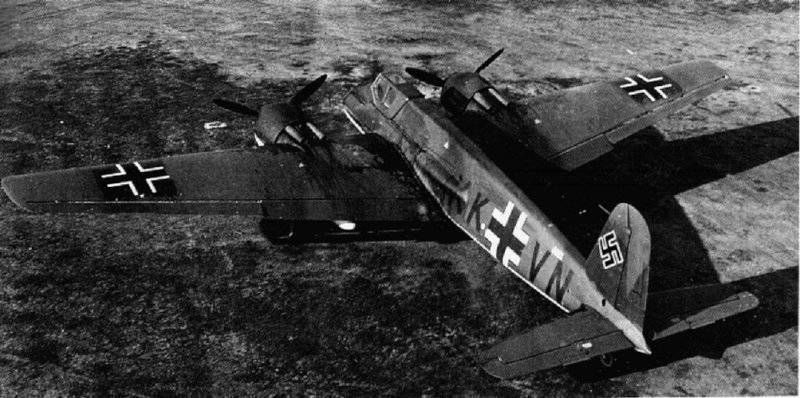
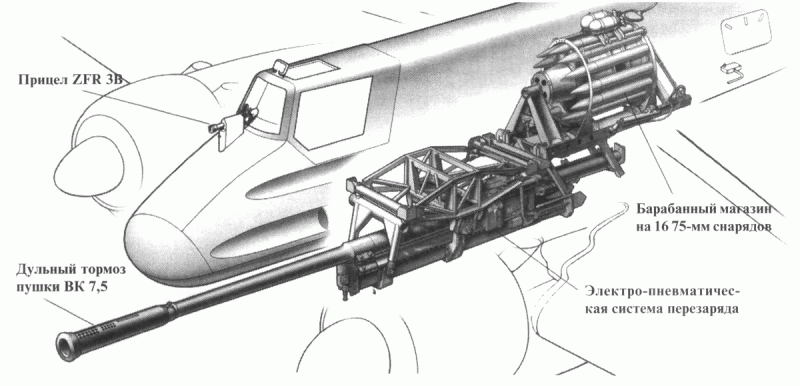
Information